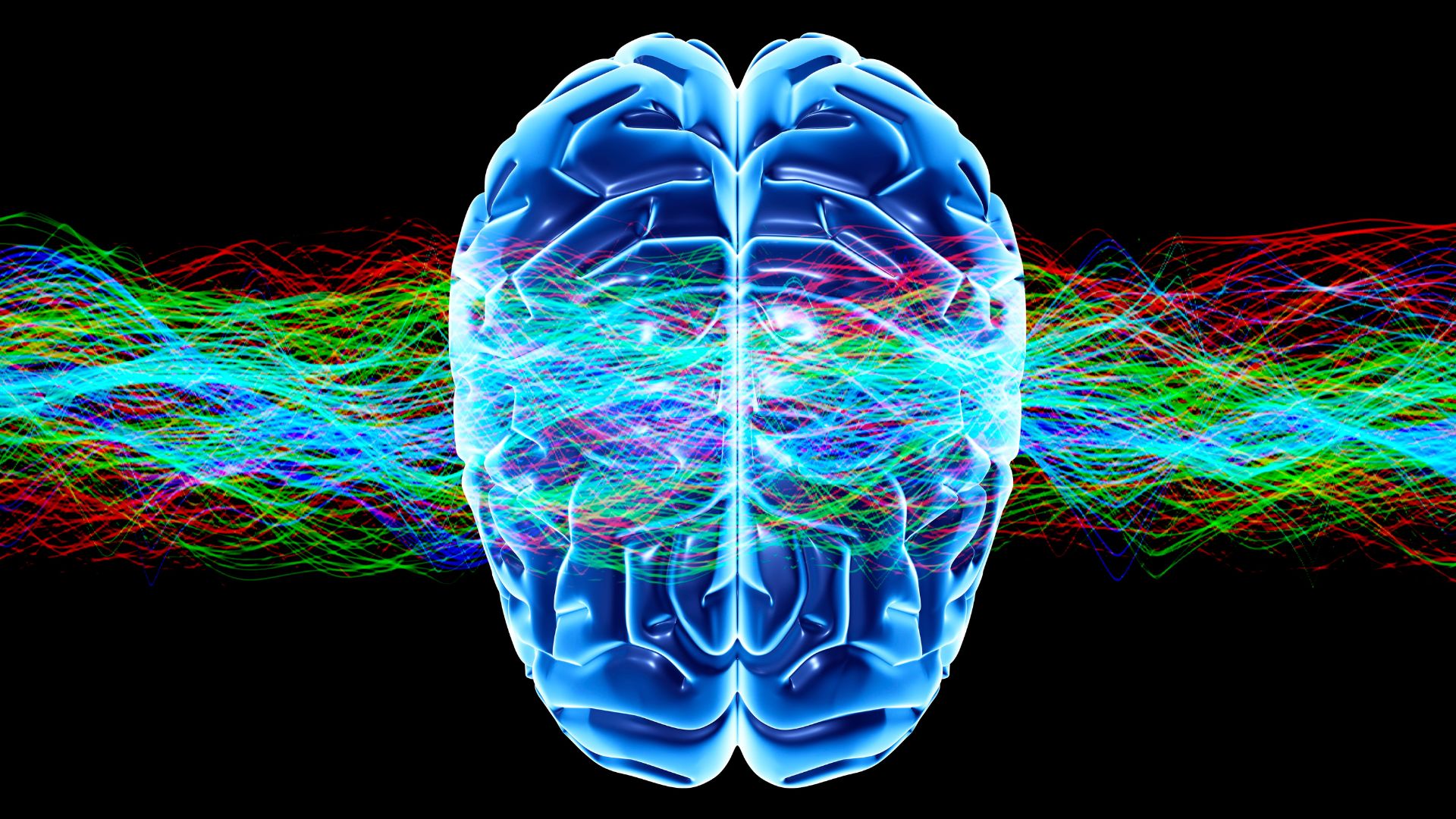Scientists have discovered a universal pattern of brain waves in multiple primate species, including humans.
This pattern of electrical activity is seen in the six layers of tissue that cover the outside of mammals’ brains, known as the cerebral cortex. In primates, higher frequency waves of electrical activity dance through the most superficial layers while slower waves bubble in layers below.
The ubiquitousness of these brain waves was revealed in a recent study, published in January in the journal Nature Neuroscience. And previous research conducted by some of the same researchers suggests that the distinct activity patterns may reflect how the brain consciously switches focus from one piece of information to the next.
The slower brain waves in deeper portions of the cortex act as gatekeepers, dictating which bits of information enter and remain in conscious thought, said senior study author André Bastos, an assistant professor of psychology at Vanderbilt University. The fast waves, which reflect those conscious thoughts, are called gamma rhythms and range between 50 and 150 hertz. The slow waves, meanwhile, are called alpha-beta rhythms and run about 10 to 30 hertz.
“You have information coming in that can get represented by gamma bursts and spikes,” Bastos told Live Science. “And then you can have another mechanism for saying, ‘I don’t care anymore, turn that off.” That’s the alpha-beta waves’ job — to yank one thought off stage to let another on.
Related: Most detailed human brain map ever contains 3,300 cell types
While previously a postdoctoral student at the Massachusetts Institute of Technology (MIT), Bastos led a number of monkey studies to reveal how this mechanism works in some parts of the cerebral cortex. Now, in the January paper, “we showed the universality of those patterns,” he said. The scientists found that the pattern consistently cropped up in 14 different regions of the cortex, not just a handful.
“What we have shown here is that it’s not just present in one area or another area, but it’s really present throughout,” Bastos said. And the researchers also showed that it appears in three different primates: macaques (Macaca), marmosets (Callithrix jacchus) and humans.
Scientists across four institutions — Vanderbilt, MIT, the Netherlands Institute for Neuroscience and the University of Western Ontario in Canada — collaborated to gather this trove of brain data from monkeys and people. They used devices called multicontact laminar probes to record activity from all the layers of the cortex at once. The probes were surgically embedded in different parts of the cortex — therefore, for the study’s human subjects, the devices were implanted in a few people who were undergoing brain surgery for epilepsy or movement disorders.
“Essentially it’s just a very micro version of the EEG,” or electroencephalogram, a way of recording electrical brain activity, Bastos said. The difference is that EEG most often uses electrodes on the outside of the scalp and thus, through that bone and tissue, it gathers a fuzzier picture of the activity happening in all the cortical layers below.

The universal brain-wave pattern involves gamma waves and alpha-beta waves, which differ in their frequencies. (Image credit: Science Photo Library – PASIEKA via Getty Images)
Laminar probes offer a more high-resolution picture, by comparison. In the study, the data gathered by the devices was fed into an algorithm of the researchers’ design that deciphered the cortical layer from which they came.
In this way, they uncovered a universal pattern of brain activity that shows up throughout the cortex and between species. This pattern is marked by peak gamma activity in layers 2 and 3 of the cortex, closer to the skull, and peak alpha-beta activity in layers 5 and 6, closer to subcortical regions of the brain. There’s also a point of crossover in layer 4.
Related: How does the brain store memories?
To check if this pattern popped up in other mammals, the team also looked at mouse brains, but the activity seen in the mouse cortex was not the same.
Based on the prior monkey studies, Bastos and colleagues suspect that the patterns reflect the same mental process in each primate species, in which the slower waves dictate which data enters conscious thought. However, they haven’t shown that definitively.
In the Nature paper, all the primates and humans were resting during the brain recordings, not engaged in a specific task. Future studies could involve having the subjects perform similar tasks while their brains are scanned; the prior monkey research had the animals perform tasks centered around an aspect of cognition called working memory, which involves temporarily holding an idea or piece of data in your mind so you can use it for a task at hand, for instance.
Looking ahead, the researchers hope to study whether conditions that affect the brain disrupt the universal pattern in measurable ways. Alzheimer’s and schizophrenia have been connected to abnormal gamma activity in the brain, for instance, so gaining deeper insights into why might help with diagnosis and treatment.
Bastos also anticipates that brain-recording technologies will continue to advance in the future, allowing researchers to record tens of thousands of neurons in different parts of the brain simultaneously. “The hope there is that we can begin to understand in a much deeper way what is the neural basis of thought, for example,” Bastos said, “or what is the neural basis for more complex types of cognition, which we haven’t really been able to touch yet.”
Ever wonder why some people build muscle more easily than others or why freckles come out in the sun? Send us your questions about how the human body works to community@livescience.com with the subject line “Health Desk Q,” and you may see your question answered on the website!


